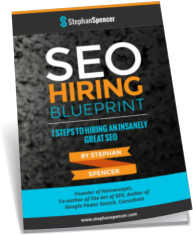I never quite understood the reason for posting a sticker in plain view on your home page saying that your site is “hacker safe” (like this site does). Why would you remind your visitor that there are hackers out there chomping at the bit to get at their credit card numbers? I only see this as a misguided attempt to build trust.Â
On the other hand, having a security seal graphic with a checkmark or padlock on it saying that you use 128 bit encryption is probably a good idea. Padlock or award/seal-of-approval imagery will make people feel more warm-and-fuzzy than seeing the word “hacker”, IMHO.Â
Another thing I like to see that builds trust is a prominently positioned link to your Privacy Policy page with a little bit of verbiage around it summarizing that under no circumstances will you share their personal information with third parties and inviting them to read the full policy.Â
Here’s a website’s privacy statement that stood out for me, for its simplicity as well as its sincerity:
Our privacy policy is simple: When you give us your email address, we’re not going to sell it or give it to anyone for any reason. Period. No “partners”, no “associates”, no “special offers”, none of that malarkey. … That’s it. Spam sucks and we’re not about to add to it.
A link to your Privacy Policy with accompanying comforting verbiage should be placed on every page of your site where you request information from them, for example on your E-newsletter Sign-Up page, on your Create an Account page, and on your Checkout.Â
Another thing that builds trust and gives your visitor a sense of comfort are clues that you are not just a faceless website but a group of real human beings. So, include staff photos on your About Us page, publish your physical as well as mailing address on your Contact Us page, and have a blog where one or more of your employees share their thoughts, ideas and opinions for the benefit of customers and visitors. For example, on our client’s e-commerce site, SteveSpanglerScience.com, you will see prominently positioned in the top right a picture of the founder, Steve Spangler, with an invitation to visit his blog. Fully 13% of purchasers at some point through the sales process visit his blog, either initially by finding his blog through the search engines, or by visiting his blog once they have already started shopping.

 SIGN UP FOR EXCLUSIVE WEEKLY CONTENT
SIGN UP FOR EXCLUSIVE WEEKLY CONTENT 


Leave a Reply